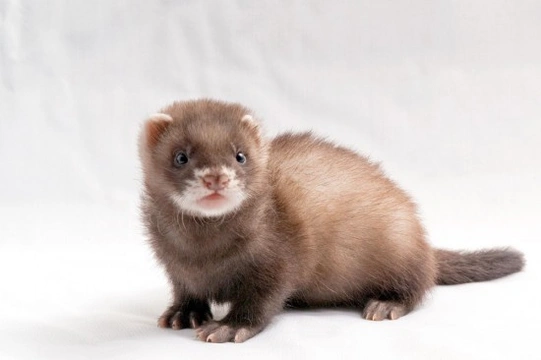
Ferret Behaviour Decoded: Understanding Your Ferret's Signals
Ferrets are lively, intelligent, and entertaining pets that thrive when their behaviour and communication signals are fully understood by committed owners. Unlike many small furry animals, ferrets share complex social and expressive behaviours similar to those of dogs and cats. If you're curious about what your ferret's antics and sounds mean, you're in the right place to decode these fascinating signals and better enjoy your pet's unique personality and needs.
The ‘Dance of Joy’
When a ferret performs the "dance of joy," it is unmissable and delightful. Your ferret will bounce on all fours, twist its body mid-air, and wiggle energetically, showing excitement and pure happiness. This is a positive sign that your ferret feels safe and content.
Dooking: The Happy Chirp
“Dooking” is the soft to loud chirping noise ferrets make when happy or excited. It is a charming vocal expression showing pleasure, often heard during play or social interaction.
Scruffing: Play Dominance
Scruffing, where one ferret gently grabs another by the neck skin and flips them over, is part of dominance and submissive play. The roles tend to be consistent between individuals. If you play with your ferret frequently, you might want to discourage scruffing to avoid accidental nips, as ferret teeth are sharp and your skin is not protected like theirs.
Bushed Up Tail: Intimidation or Interest
Much like cats, ferrets raise and bush up their tails when frightened or defensive to appear more intimidating. However, a bushy tail can also signal excitement or curiosity. Observe body language closely: if accompanied by hissing or retreat, the ferret is likely scared and should be handled gently.
Lunging and Chasing: Invitation to Play
Ferrets love to chase and are energetic creatures. Lunging and bouncing at you followed by running off is an invitation to join their playful game, not aggression. Engaging with this play strengthens your bond.
Hissing: A Warning Sign
Hissing in ferrets warns of fear, anger, or discomfort. If your ferret is hissing at you or others, avoid handling until it calms down to prevent bites. This sound is an important communication cue demanding respect.
Digging: Natural Instincts
Ferrets have a natural urge to dig, reflecting their wild background in burrows. To help satisfy this behaviour and prevent unwanted digging in the house or litter tray, provide tunnels, digging boxes with sand, or similar activities in their environment.
Shrieking or Screaming: Distress Alert
A shriek or scream signals extreme distress or injury. It demands immediate attention to check for harms or bullying by cage mates. Although shrieks sometimes occur in dominance play, frequent vocal distress should be taken seriously.
Tail Wagging: Excitement Like Dogs
Ferrets may wag their tails similar to dogs, expressing joy and readiness to play. This joyful indicator usually accompanies other playful body language.
Ferret Battle Dance: A Different Message
Distinct from the dance of joy, the battle dance is a warning display often combined with a bushed tail, hissing, or retreat. Intact males may also release a strong scent during this behaviour. Recognising the difference helps you understand when your ferret feels threatened or dominant.
Toe Nipping: Playful but Painful
Many ferrets are intrigued by human feet and may nip toes, especially if bare. Though usually playful and not aggressive, this can be painful. Wearing thick socks or slippers indoors and training your ferret early helps prevent this habit.
Hoarding and Hiding Toys: The Magpie Instinct
Ferrets have a strong tendency to collect and hoard items like toys, slippers, or anything they find interesting. They transport these treasures to safe spots to enjoy later. It's wise to keep important items out of reach and retrieve stolen belongings gently to avoid upsetting your ferret.
Understanding Common Questions About Ferret Behaviour
Why do ferrets do the “dance of joy”?
Quick Answer: The dance of joy is a way ferrets express happiness and excitement through energetic movements like jumping and twisting.
This behaviour is a pure sign your ferret feels relaxed and ready to engage in play. Encouraging this with a safe, stimulating environment benefits their mental health.
What does scruffing mean and is it safe?
Quick Answer: Scruffing is a natural play behaviour where one ferret pins another, signalling social dominance rather than aggression.
Though common in ferret play, scruffing can result in accidental nips if your ferret plays rough with humans. Training your ferret to avoid scruffing helps maintain safe interactions.
How can I reduce unwanted digging?
Quick Answer: Provide digging alternatives like sandboxes, tunnels, or lots of toys to satisfy your ferret’s instinctual digging needs.
If these needs are unmet, ferrets may dig in their litter tray or household areas. Redirecting this behaviour with suitable outlets encourages positive habits.
Conclusion
Decoding your ferret’s behaviour dramatically improves your relationship and ensures their happiness and well-being. By recognising joyful dances, warning hisses, playful lunges, and natural instincts like digging and hoarding, you can respond with empathy and care. Always provide a stimulating environment and gentle training to keep your ferret’s life rich and rewarding.
For those ready to welcome a ferret into their home, remember to seek your new pet responsibly through reputable breeders or rescues, ensuring ethical practices and lifelong commitment.



